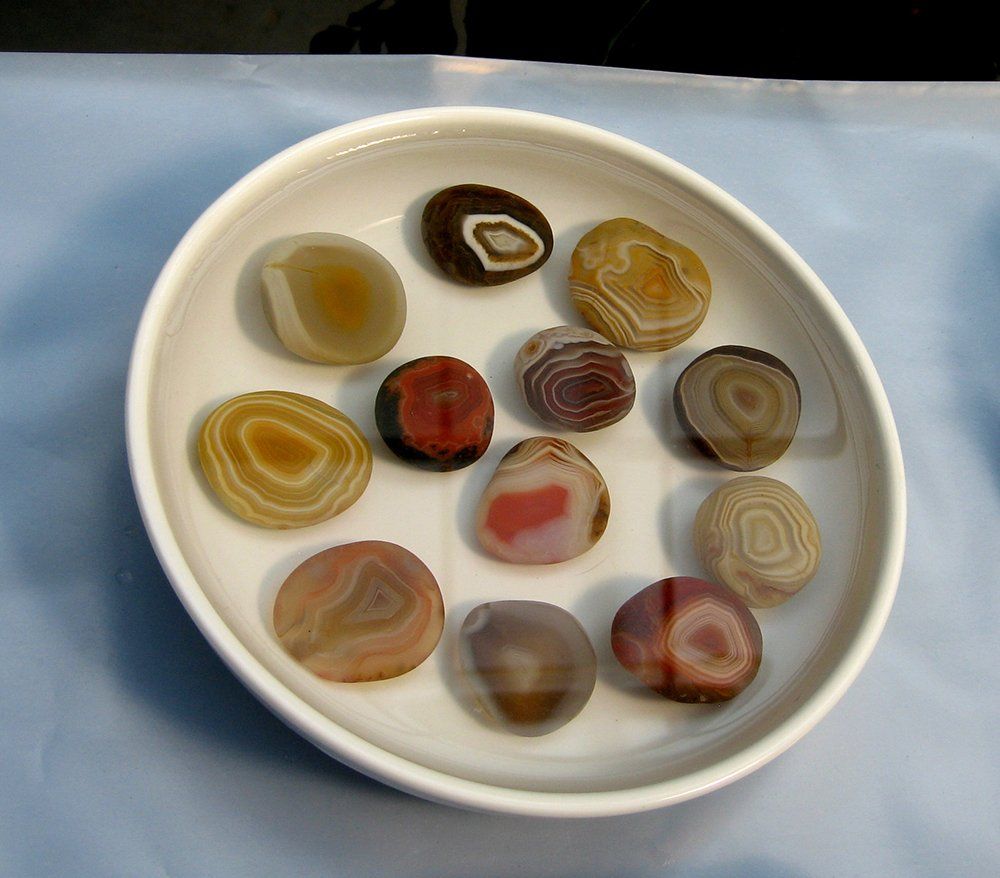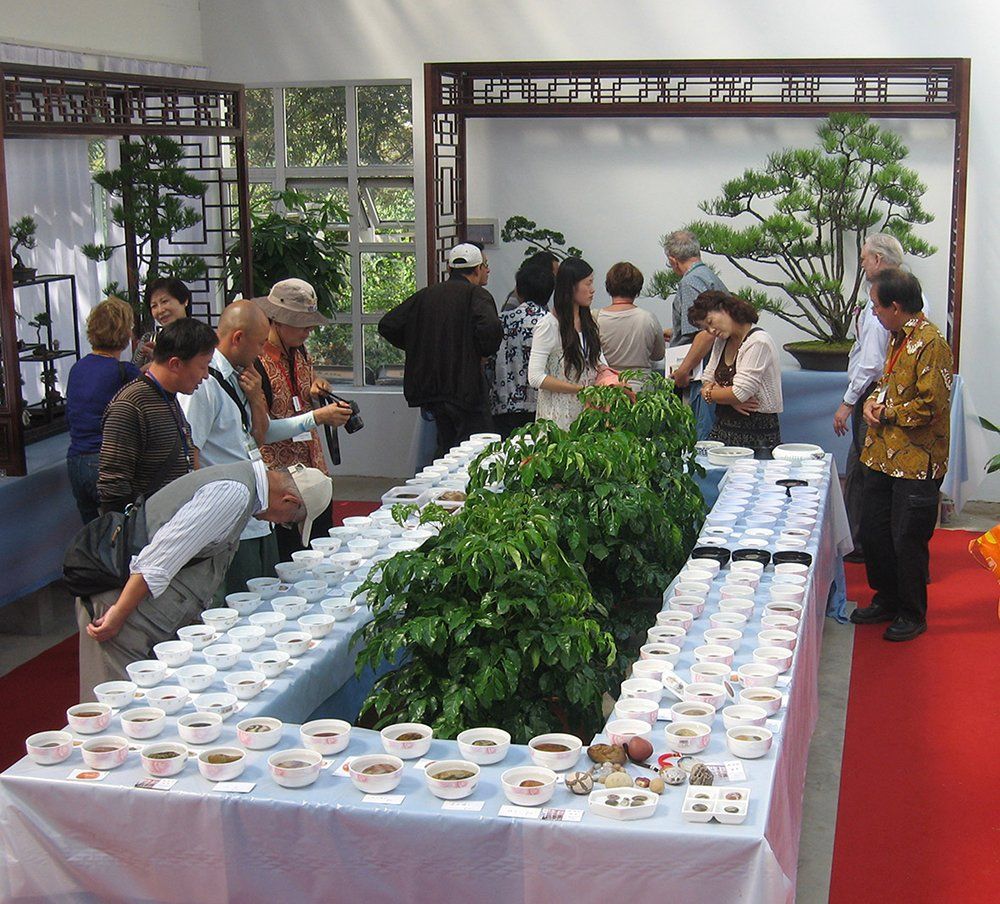Chinese Rain Flower Pebbles (Yuhua shi)The Oldest Pebbles used as Viewing Stones in China
By Thomas S. Elias, December, 2012
Rain Flower pebbles are certainly one of the oldest stones to be considering as a viewing stone in China. Evidence shows that these stones were collected and appreciated at least 4,000 to 5,000 years ago. These colorful pebbles were found in grave sites with bodies in the excavation of ancient sites near Nanjing in Jiangsu Province. Rain Flower pebbles are still popular among some stone collectors in China, but are not well known in western countries. These Chinese stones are small, and have a long history with humans. Agates similar to Rain Flower stones have been collected in North America and Europe, primarily by gem and mineral enthusiasts.
The name Rain Flower stone is derived from an ancient myth dating back to the Southern Liang dynasty about 1,400 years ago. A Master Yunguang was explaining sutras and teaching about dharma (upholding the ultimate law of the universe) at Shizi Post outside of Zhonghua gate in what is known today as Nanjing City. The myth states that his sincerity and insight moved the heavens so much that the heavens turned him into rain and flowers. As a result this site was called the Rain and Flower Terrace. Actually, this site is an ancient gravel stratum formed millions of years ago. Various types of agates, crystals, opals, and other stones are found in this extensive gravel layer. The stones have been reduced in size, rendered smooth, and shaped to round or oval or sometimes flatten by millions of years of tumbling with sand and other stones in a ancient river.
These stones are mentioned in numerous early Chinese writings. Small agates from rivers and streams are mention in Du Wan’s Stone Catalogue of Cloudy Forest (Yulin Shipu) probably published between 1126 and 1130 A.D. The latter classic reference Suyuan Stone Catalog (Suyuan Shipu) by Lin Youlin was published in 1613. This four volume work contains six pages of illustrations devoted to Rain Flower stones. The Ming dynasty calligrapher Mi Wanzhong had a collection of 15 of these stones, each named for a scene it resembled. Numerous others wrote about these stones through the Qing dynasty to modern times. In1989, a museum devoted solely to these stones was constructed in Nanjing. This museum was replaced with a larger, more modern museum in 2007. The city of Luhe, near Nanjing, holds an annual Rain Flower Stone festival each year for the approximate 50,000 people in Jiangsu and adjacent provinces who collect these stones.
Currently, the stones with a pattern than resembles a landscape, human or animal figure, or a fascinating pattern are more highly valued in the market place. Multi-colored stones from opal with bright reds, greens, and blue are particularly valuable. Prices for high quality stones range from 2,000 to 50,000 RMB. The highest price reportedly paid for one of these stones was 500,000 RMB. Lower quality stones command prices ranging from 10 to 500 RMB depending upon size, shape, patterns, and color. Larger stones in the 4 to 8 cm range are more highly regarded than smaller stones. The lowest quality stones are often polished and sold as “lucky stones.” Small stones may be shaped and used to make simple bracelets, while nicer stones are used in other jewelry such as necklaces, broaches, and wearable items.
Rain Flower stones are typically displayed under water in simple white porcelain bowls. The water intensifies the colors while lines demarking layers and patterns become more obvious. Large stones, 5 to 8 cm, are usually displayed one per small bowl. Some stones that are simple, transparent and one or two colored can be displayed in a black bowl to provide contrast. We have seen a few high quality stones displayed dry in an arrangement with other artifacts.



